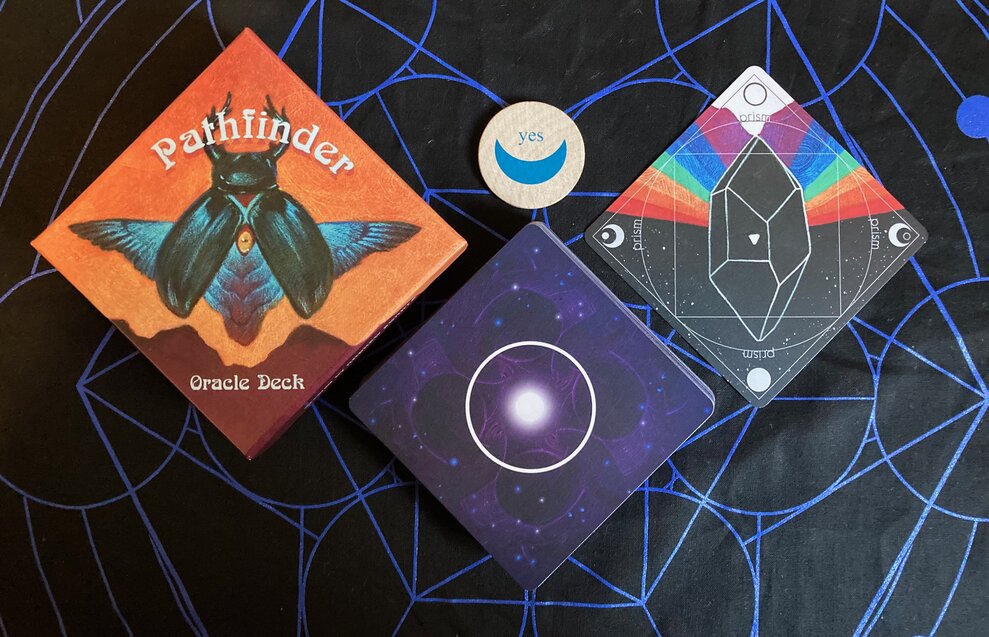I adore Andrew Swartz’s artwork, and I own all of the Skullgarden decks. The Earthbound Oracle was my first oracle deck, I’ve been slowly learning Lenormand using the Seeker’s Lenormand, and when I backed the Pathfinder Oracle Kickstarter, I chose the tier that came with a copy of the Wooden Tarot. The collection is complete (unless Swartz makes another deck, which I would immediately buy)! With the Pathfinder Oracle, Swartz has created a truly unique deck.
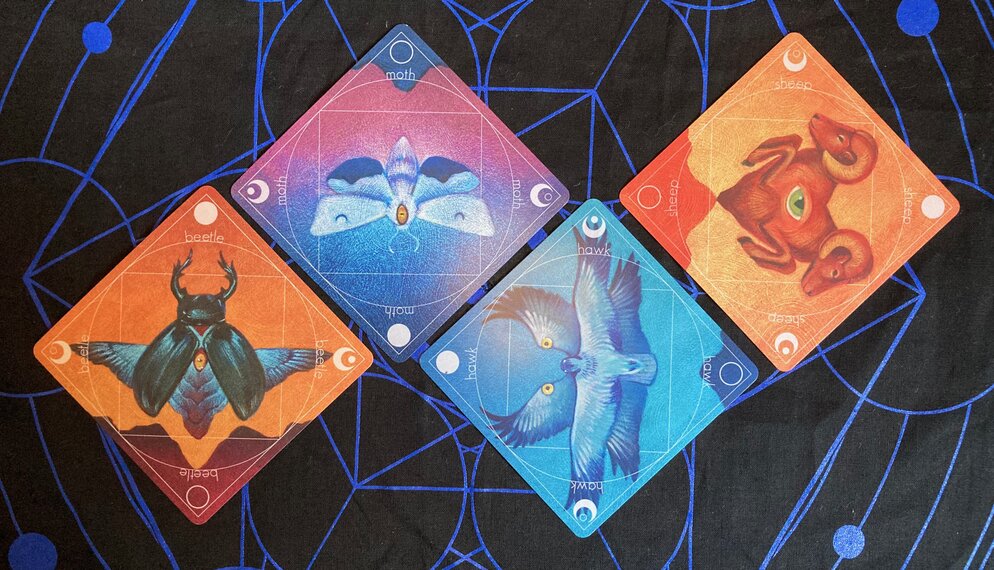
The Pathfinder Oracle deck contains 48 gorgeous cards, printed on sturdy card stock and housed in a protective box. The art of the Pathfinder Oracle is inspired by National Parks and wild spaces, often filtered through a cosmic/psychedelic vision. The Bat card, for instance, has a third eye. Many animal cards, like the Fox and Ram, have doubled faces or bodies. The Seed glows with the light of creation. Many of the cards depicting landscapes evoke a sense of awe, and sometimes contain subtle magical touches — mountaintops floating in the Snow, two moons in the night sky above the Desert. And there are cards that really lean into the strangeness — the Cosmic Egg, an hourglass of Time, a straight-up UFO.
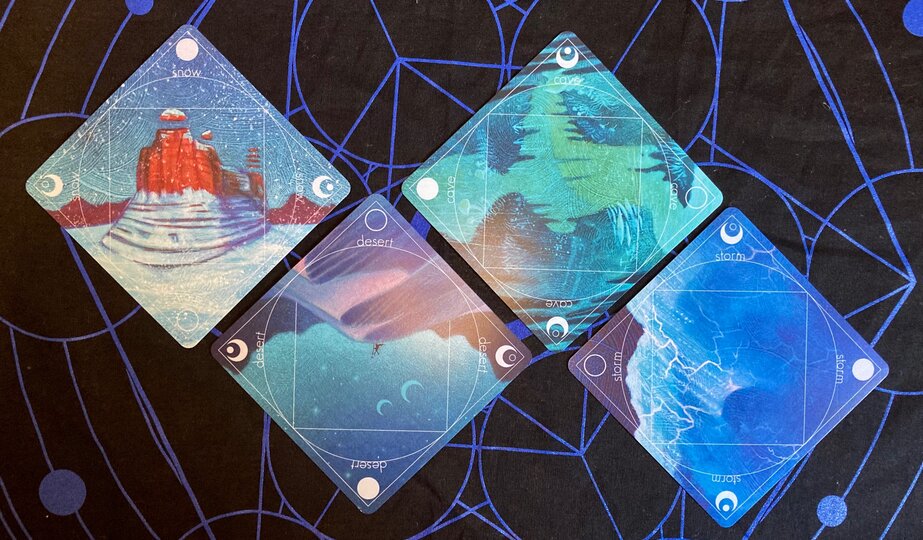
A unique aspect of the Pathfinder Oracle is the four-corner system that gives each card four different shades of meaning. Each corner has a symbol indicating whether to read the card as Positive, Negative, Active, or Passive. The symbols are evocative of moon phases, so another potential way to think of these meanings could be as Full, New, Waxing, and Waning energies. This does require a unique method of shuffling in order to mix up the corner positions as well as the cards. I have taken to using an overhand shuffle with this deck, stopping to turn the cards in my non-dominant hand 90 degrees every so often, and then turning the deck to have whichever corner feels right facing up before I cut the deck a final time. It’s a slow shuffle, but I think it works well. Others might want to experiment with their own shuffling methods.
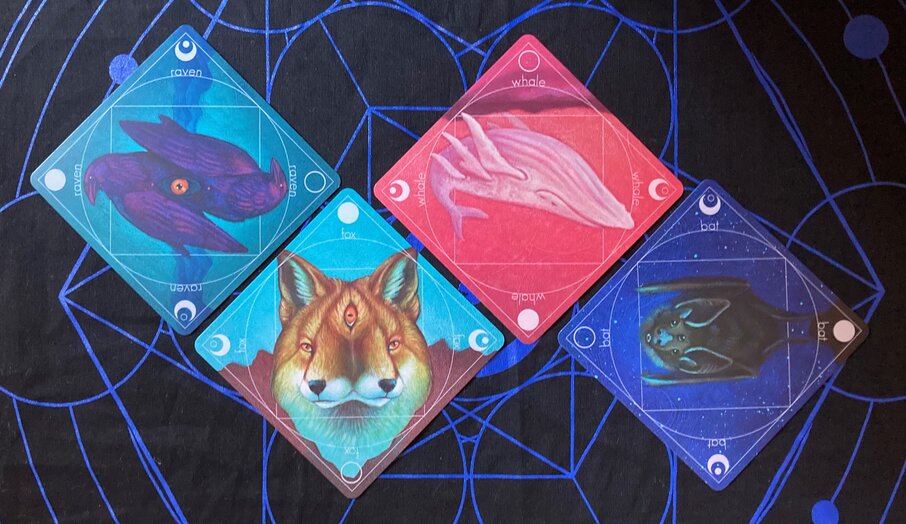
The deck, unlike Swartz’s other decks, comes with a guidebook. There is a single page devoted to each card, with brief readings for each of the four corners. The guidebook helps the reader consider potential ways to think of each card as Positive/Negative/Active/Passive. These readings seem to suggest that the Positive/Negative poles are about the querent/situation embodying or presenting qualities of the card: a fox is cunning/a fox is deceptive. The Active/Passive poles indicate appropriate actions to take (or not take): a fox tracks down its prey/a fox hides in its den. The guidebook is helpful, but not prescriptive, and the evocative art leaves plenty of space for interpretation. I’m glad for its inclusion — the complexity of the deck seems to call for even a loose guide, whereas The Earthbound Oracle feels like it stands on its own just fine.
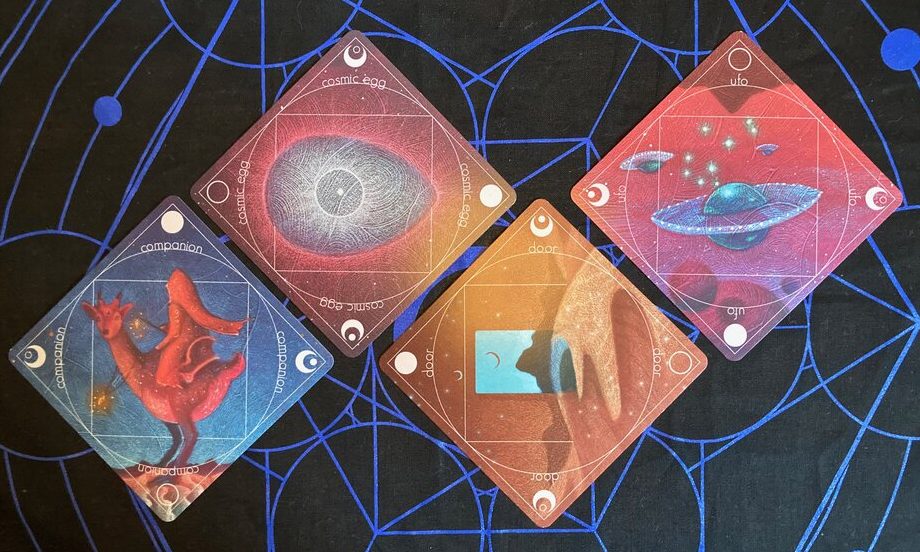
I tend to use oracle decks for single card draws, or to round out tarot readings with a final message. The four-corner system brings a lot of potential nuance to a single card reading. Even a simple draw for a daily message suggests subtle shades of meaning. However, while the four-corner system is a wonderfully unique concept, the real reason it’s so successful is that the art is absolutely fantastic. I feel as though I’m looking at powerful images from our own awesome world, just vibrating on a slightly weirder frequency. The deck manages to feel grounded and mystical all at once.
I’m a huge fan of this deck, and if you don’t have it yet, it’s a great time to get a copy. As of this writing in September 2020, the Skullgarden store is offering a 10% off “quarantine discount” on all decks and books (prints of Swartz’s art are also currently 20% off)! I’d highly recommend checking out The Pathfinder Oracle along with Swartz’s other decks. Let it help guide you on your own path.

